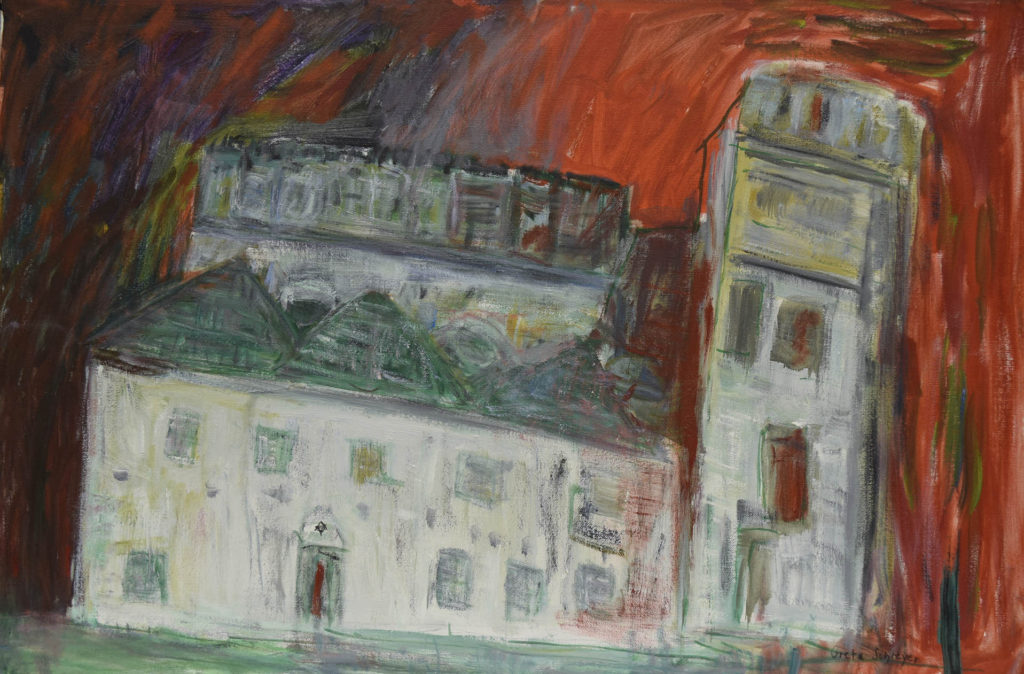Burning Synagogue 1—Lutsk, Poland
Greta Schreyer (Vienna, Austria 1917-2005 New York City)
Oil on canvas, h. 24 x w. 30 in.
USA, 1999
Cincinnati Skirball Museum, gift of Linda Schreyer, 2016.1.1
Greta Schreyer was born in Vienna, Austria, the daughter of a master goldsmith. She too became a master goldsmith and studied art in Vienna and Paris before immigrating to the United States in 1938. In New York, she studied at the New School, The Art Students League, and at Pratt Institute. A prolific artist, she worked in oil, watercolor, and lithography. Near the end of her life, she painted a series of burning wooden synagogues, commemorating the distinctive massive synagogues of 18th-century Poland, destroyed by the Nazis during the Second World War.
Now located in western Ukraine, Lutsk was the capital city of a province within the Kingdom of Poland in the sixteenth century. Following the destruction of 3 previous wooden synagogues, a stone-built synagogue was constructed in 1626. The prominent tower of the synagogue is believed to have been part of a fort built in 1380, and the building served a defensive role during many battles over its long history. Damaged but not destroyed during the Nazi invasion of Poland, Russia, and Ukraine, the building has remained untouched for many years. The Jewish community is long gone, as the Lutsk ghetto was established in December of 1941, and in 1942, 17,000 people in that ghetto were executed. In Greta Schreyer’s interpretation, we see the mostly intact façade of the Lutsk Synagogue, white with green roofs, under a fiery assault from the rear, the sky ablaze behind the tower and square main building, which seems deceptively calm. The topsy-turvy world this image represents is emphasized by the slight tilt to the right of the building, reminding us of its fragility, even as it still stands.

